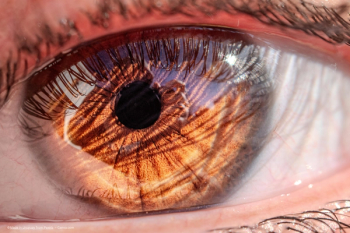
Improved tools allow better care
Progress in glaucoma followed a slow, steady course in 2009, according to specialists
Key Points
"In the field of glaucoma, we are continuing on a slow forward path, gathering improved diagnostic and therapeutic tools that are allowing us to take better care of our patients," said Jeffrey M. Liebmann, MD, clinical professor of ophthalmology, New York University School of Medicine, and director, glaucoma service, Manhattan Eye, Ear and Throat Hospital, New York.
Diagnostics
"Using SD-OCT, we are able not only to see the full thickness of the retina, macula, and nerve fibre layer, but to look at the layers of tissue relevant to a particular disease," said Dr Schuman, Eye and Ear Foundation Professor and chairman of ophthalmology at the University of Pittsburgh School of Medicine. "Regarding glaucoma, one SD-OCT platform manufacturer now offers software for ganglion cell complex analysis that is based on assessment of the inner plexiform layer, ganglion cell layer, and macula. The data from this analysis show very high correspondence with glaucoma and are at least as good as if not better than analyzing changes in the nerve fiber layer around the optic nerve.
"SD-OCT allows us to see tissue in high relief at the cellular layer level of detail and to track changes longitudinally with repeated scans. We are learning new things about glaucoma and retinal diseases that were not possible before," he continued.
Several manufacturers of the SD-OCT devices have introduced progression analysis software, and Dr. Schuman said he believes this methodology to determine whether a change has occurred, or is likely based on statistical analysis of data, is an important step forward.
Dr Liebmann agreed that SD-OCT represents advanced technology that provides improved qualitative information on retinal structures, but said that its ability to provide better quantitative information than time-domain OCT is a promise yet to be proven.
"There is no question that SD-OCT is generating better-quality data because of its better image registration and sampling characteristics and it has the potential to revolutionize structural testing of glaucoma," Dr Liebmann said. "However, glaucoma is a longitudinal disease for which data will need to be collected over a period of years to determine parameters for detecting structural change. More data are needed to validate the progression software, and we hope the industry and the scientific community will be dedicated to that task."
Ultimately, SD-OCT or some other structural test may emerge as an acceptable surrogate for visual functional loss as an endpoint for glaucoma interventional trials. "This could revolutionize the evaluation and development of new glaucoma pharmacotherapies," Dr Liebmann said.
Dr Schuman also highlighted the benefit of scanning laser tomography with a proprietary device (Heidelberg Retina Tomograph [HRT], Heidelberg Engineering) to monitor glaucoma-related structural changes in the optic disc.
"HRT continues to be very useful for identifying glaucomatous changes over time, and especially because newer platforms have remained backward-compatible, allowing the validated progression software to use data acquired today as well as data acquired with earlier versions of this technology," he said.
In terms of progression analysis for structural imaging devices and visual field testing, Dr Liebmann said there has been greater emphasis on trend analysis versus event analysis.
Whereas event analysis detects change by comparing results of a current test with the baseline, trend analysis incorporates data from all intervening tests to determine rate of change, he said.
"The focus on trend analysis will probably accelerate for both structural and functional testing of glaucoma progression," Dr Liebmann said. "By being able to understand the rate of loss better, we will be able to identify individuals at greatest risk of going blind from their disease and refine our risk assessments better."
Newsletter
Get the essential updates shaping the future of pharma manufacturing and compliance—subscribe today to Pharmaceutical Technology and never miss a breakthrough.










































